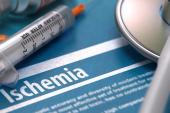COURAGE and ORBITA Had No Impact on Elective PCI Rates in UK
Even though both RCTs showed no advantage to PCI in stable CAD patients, UK interventionalists didn’t alter their practice.

The large, randomized COURAGE trial, as well as the more recent sham-controlled ORBITA study, had no meaningful effect on rates of elective PCI in stable CAD patients in the United Kingdom, a new analysis shows.
Over 14 years, a period that included the publication of both trials, the number of elective PCIs performed each year and per 100,000 people remained stable. With COURAGE, which was the larger of the two studies, investigators observed no significant differences in baseline demographics, comorbidities, and angiographic characteristics of patients in the 12 months before the study’s publication and in the 12 months that followed, although the proportion of patients undergoing elective PCI for class I angina declined.
Lead investigator Muhammad Rashid, MD, PhD (Keele University, Stoke-on-Trent, England), himself an interventional cardiologist, acknowledged. “We sometimes don’t adopt the data maybe as quick as we should—it takes a bit of time for us to digest.” Unconscious bias also plays a role: physicians may be quicker to integrate the results of randomized, controlled trials if they fit with their practice habits, but slower to adopt results that clash with their personal beliefs, said Rashid.
Senior author Mamas Mamas, BMBCh, DPhil (Keele University/Royal Stoke University Hospital, Stoke-on-Trent, England), agreed, saying doctors see in the results what they want to see, depending on their clinical perspective.
“I think each group is interpreting the data in a way that fits their narrative,” Mamas told TCTMD. “Interventional cardiologists are interpreting this to say that we were managing patients well as per the COURAGE trial so we wouldn’t expect a change in numbers. The noninvasive people are saying it shows that interventionalists don’t believe the data and that’s why the numbers aren’t changing. . . . Our invasive colleagues are saying we aren’t going far enough and need to persist with medical therapy.”
The study was published this week in the Journal of the American Heart Association.
The BCIS Registry
Published in 2007, COURAGE was a landmark study in stable CAD patients that showed there was no benefit in terms of hard clinical endpoints when adding PCI on top of optimal medical therapy. ORBITA shook the field up further when Rasha Al-Lamee, MBBS (Imperial College London, England), presented the results in 2017 showing that PCI for single-vessel CAD was no better than a sham procedure when it came to changes in exercise capacity and angina symptoms.
In their analysis this week, researchers turned to the British Cardiovascular Intervention Society (BCIS) registry, a national database of PCI procedures performed in England and Wales, to gauge how well those trial results were adopted by UK physicians. The study cohort consisted of 430,248 adults aged 18 years and older who underwent PCI for stable angina between 2006 and 2019.
As noted, in the UK system, financial incentives don’t explain this pattern. I think the most likely explanation is that— at their core— most ICs don’t really believe the trial results.
— David J. Cohen, MD, MSc (@djc795) September 14, 2022
Between 2006 and 2019, annual elective PCI rates increased from 50.7 to 58.4 per 100,000 individuals, while the number of patients undergoing nonelective PCI increased from 45.9 to 99.6 per 100,000 during the same time period. Overall, the incidence rate of elective PCI after COURAGE and ORBITA were published was unchanged when compared with time periods before both studies’ publications.
In terms of the clinical characteristics, the proportion of patients undergoing PCI for class I angina, where ordinary physical activity like walking or stair climbing does not cause symptoms, increased from 5.1% to 9.7% during the study, while the proportion of patients undergoing PCI for class IV angina (no physical activity without discomfort) remained stable.
The proportion of elective PCI patients without any physical limitations (NYHA class I) increased from 36.9% to 41.7% and there was a large increase in the use of PCI in patients without ischemia on stress testing. Patients undergoing PCI tended to have more comorbidities, such as diabetes, hypercholesterolemia, hypertension, previous MI, and previous PCI, over time.
The clinical and procedural characteristics of patients in the 12 months before COURAGE and ORBITA were published were similar to those of patients in the 12 months after these trials came to light. After COURAGE, PCI in patients with class I angina declined slightly (5.1% vs 4.8%), as did the proportion of patients undergoing PCI without ischemia on stress testing (49.6% vs 44.9%).
Thank you, I don't think the study is an undue criticism of current PCI practices, what we actually show is that there is a gap between the translation of RCTs into real-world practices. there are many factors here which we have tried to highlight in the discussion of the paper
— Dr M Rashid, PhD (@drrashid05) September 14, 2022
Like Rashid, Mamas suggested that the interventional community is slow to absorb new data. “That’s entirely possible. ORBITA came out and the community needs to digest the findings and think about the implications. It may be that it takes longer than a 12-month period to see that impact,” he said.
However, he continued, “that doesn’t really fit with COURAGE. It was published in 2007 and clearly, many years after COURAGE, there hasn’t been a downturn in elective PCIs.”
Commenting on the study for TCTMD, Robert W. Yeh, MD, MSc, MBA (Beth Israel Deaconess Medical Center, Boston, MA), called it a comprehensive, descriptive analysis, one that provides a “10,000-foot view” of the secular trends in elective PCI in England and Wales.
But while it has generated a lot of discussion on social media, Yeh said the study itself isn’t controversial because it’s not making any claims about what’s driving UK practice. For Yeh, it’s very difficult to come up with a single reason that explains the entirety of the data, especially since there are many variables at play.
“Personally, I wouldn’t say that this is definitive proof that UK interventionalists ignore the data,” he told TCTMD. “I would say I’m surprised, though. In the US, at least in Massachusetts and some of the states we’ve looked at, we’ve seen such a dramatic decline in PCI, certainly since 2005.”
What Explains the Results?
Interestingly, the researchers also performed an analysis of PCIs performed at centers involved in the ORBITA trial. There were no significant changes in risk profiles, indications for PCI, preprocedure stress testing, or angina classification between these and non-ORBITA trial centers. An analysis showed similar temporal trends in the rates of elective PCI volume between ORBITA trial centers and all other hospitals during the study period.
One of reasons put forward to explain the lack of change in elective PCIs following the two studies is that UK physicians were already managing stable CAD patients in a conservative manner. Mamas pointed out that the BCIS registry lacks information on the medical management of these PCI-treated patients, so they can’t assess how well they were treated with medication or if patients were still symptomatic despite being maxed out on treatment.
If physicians think that something makes sense physiologically it is very hard to dissuade despite there being no or contrary credible evidence. There is a basic bias and flaw in the human thought process.
— Bill Pentz (@wpentz) September 14, 2022
“It could be that in UK practice patients are on several antianginal medications and yet despite optimal medical management they are still getting symptoms,” said Mamas.
Challenging that hypothesis is the fact that there no changes in the use of PCI for stable CAD patients without angina symptoms and those without ischemia on stress testing. Moreover, many CAD patients who are referred to him for elective PCI aren’t optimized on guideline-directed medical therapy, he said, and many don’t strictly match the patients enrolled in ORBITA.
“We know that the patients in ORBITA were very different from the sorts of patients we see and treat,” Mamas said. “We also know from social media and speaking with colleagues that perhaps as invasive cardiologists, we have a lower threshold for treating patients than one might consider if you strictly applied clinical trial data. I’m not sure this study tells us if we’re ignoring the findings—I think you can interpret the study in many ways.”
Rashid also emphasized that randomized trials do not always represent patients seen in clinical practice. “The selective nature of randomized trials has to be appreciated,” he said.
Sanjay Kaul, MD (Cedars-Sinai Medical Center, Los Angeles, CA), who wasn’t involved in the analysis, pointed out that the Institutes of Medicine once published a study showing a time lag of 17 years between published research and integration into clinical practice. He suspects, however, that such a long lag shouldn’t apply here, given the high-profile nature of COURAGE and ORBITA.
That said, he wasn’t surprised there was no difference in elective PCI rates over time, pointing out that both trials were criticized by interventionalists when they were presented and published.
“When COURAGE came out, there were a lot of criticisms,” said Kaul. “I remember the [interventional cardiologists] saying there’s no new scientific information here, what do we need to change. Then they said the trial design was unrealistic, patients were randomized after angiograms were done, and that it filtered out high-risk patients likely to benefit from PCI.”
There were also criticisms about the use of bare-metal stents (not optimal practice), that revascularization was incomplete, and that medical therapy achieved wasn’t possible in the real world. ORBITA was equally excoriated for similar as well as other reasons.
“For the right or wrong reason, the interventional cardiologists just aren’t convinced that the results apply to the patients they’re seeing,” he said. Kaul also emphasized that patients shouldn’t be left off the hook here either, noting that many still believe that they believe PCI for stable PCI will help them live longer.
Social Reactions and Exceptions
The study has generated a large amount of discussion on Twitter, with physicians and researchers trying to make sense of the findings. Both Mamas and Rashid pointed out that money is unlikely to be the driving force for the lack of change as there are no volume-based financial incentives for UK physicians working in the National Health Service.
“It’s not that we’re not responding [to COURAGE and ORBITA] because we won’t get paid to do procedures,” said Rashid.
No, no, no! This is just another example of how too many cardiologists, be it in the UK, US, or worldwide, subscribe to EBDM—“Evidence-Be-Damned Medicine”. Millions have been spent on RCTs but when the results are unpopular, denial is a powerful counterbalance to science & facts.
— WEBodenMD (@webmd11) September 14, 2022
Still, despite the back-and-forth on social media, there are data showing that interventional cardiologists do respond to randomized clinical trial results. In 2015, Yeh and colleagues published research showing a large decline in population-wide rates of coronary revascularization, including a near 50% reduction in elective procedures between 2003 and 2012, in Massachusetts.
Last year, Yeh, along with lead author Zaid Almarzooq, MBBCh (Brigham and Women’s Hospital, Boston, MA), expanded the study to Florida, Michigan, Maryland, and New York, and they showed PCI declined 10% between 2010 and 2017, a trend driven by a 34% reduction in elective PCI that occurred between 2010 and 2013.
The US, said Yeh, doesn’t have a national registry that captures all inpatient and outpatient procedures so it’s impossible to get a full look at countrywide trends. Still, the data suggest that elective PCI appeared to decline more in the US after COURAGE than it did in the UK.
Yeh pointed out that the proportion of patients without angina represented only a small subgroup, adding that there are unusual circumstances where operators will stent patients without angina. These include “pockets of patient populations” with significant coronary lesions who can only return to work if they are treated with PCI, such as airline pilots, as well as patients eligible for renal transplant who can’t undergo the procedure unless treated.
Even though there are data suggesting declines in elective PCI in several US states, Kaul noted there also are data from the NCDR registry suggesting a considerable number of patients are still referred for PCI despite having no angina symptoms or evidence of ischemia on stress testing. Others are referred despite not taking any anti-ischemic medications. “It highlights a disconnect between what the guidelines recommend and clinical practice,” said Kaul.
Mamas noted that while COURAGE and ORBITA both showed that PCI was no better than guideline-directed medical therapy in the treatment of stable CAD, he does see patients who simply won’t take medication or are unable to tolerate it. These include runners or athletes who might be unwilling to take a beta-blocker or calcium channel blocker because it hinders their performance. While he pushes medical management, if they simply won’t stay on treatment, he will perform PCI.
“It really does come down to discussing with patients that there’s no benefit to PCI in stable angina, at least for hard endpoints that we’ve seen in the trials,” said Mamas. “But many will still go down that route rather than take several antianginals. It’s never all-or-nothing, though. It’s very rare you’d do PCI in someone without any antianginal medication.”
As for that other landmark study in stable CAD patients—ISCHEMIA—Rashid said they had hoped to conduct a larger study that would have included it as part of their analysis, but the COVID-19 pandemic blew up those plans. ISCHEMIA was published in 2020, but all elective procedures in the UK and elsewhere were halted that year as hospital staff dealt with COVID-19, making it impossible to study the trial’s true impact on elective PCI rates.
Michael O’Riordan is the Managing Editor for TCTMD. He completed his undergraduate degrees at Queen’s University in Kingston, ON, and…
Read Full BioSources
Rashid M, Stevens C, Wijeysundera HC, et al. Rates of elective percutaneous coronary intervention in England and Wales: impact of COURAGE and ORBITA trials. J Am Heart Assoc. 2022;11:e025426.
Disclosures
- Authors and editorialists report no relevant conflicts of interest.





Comments